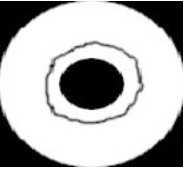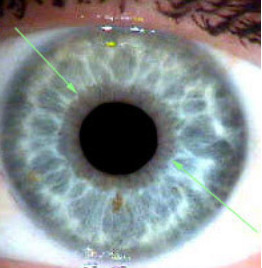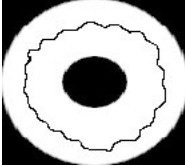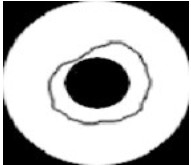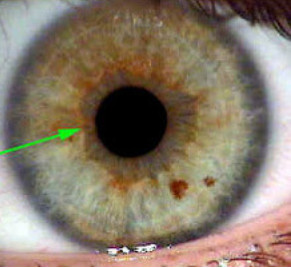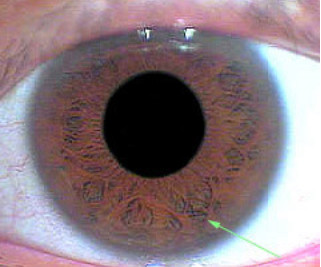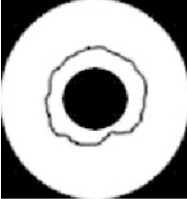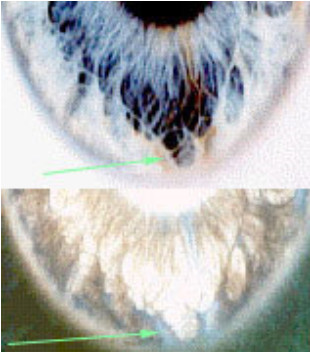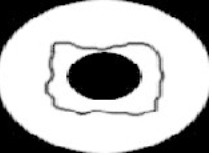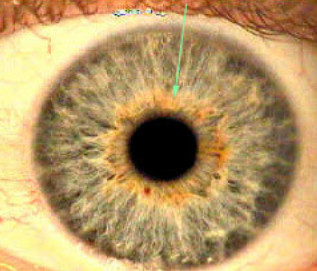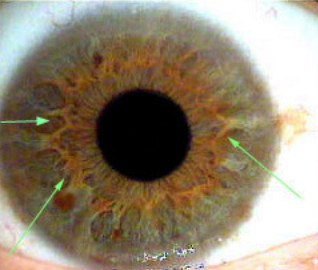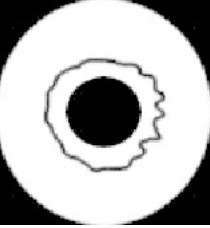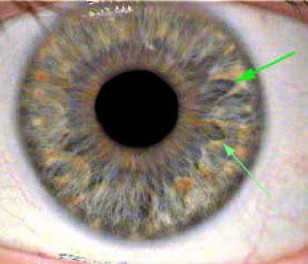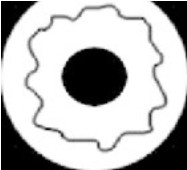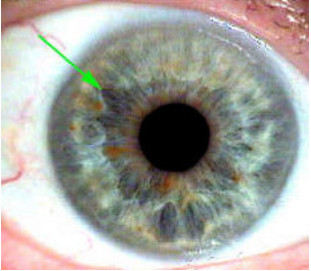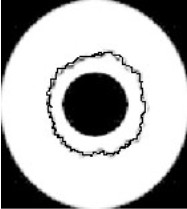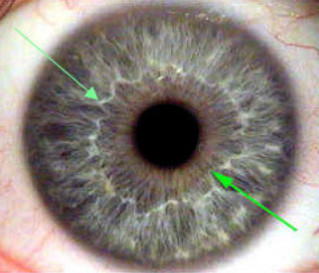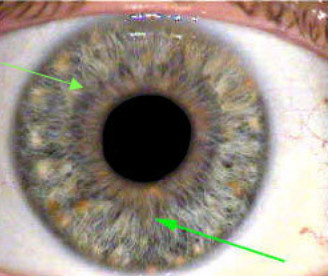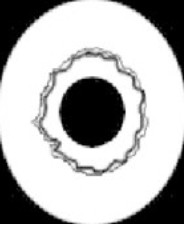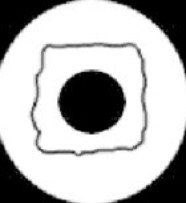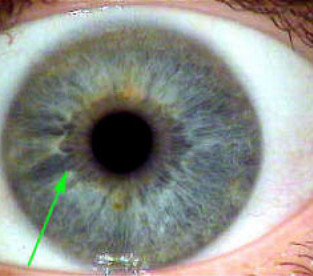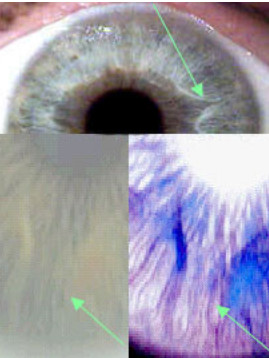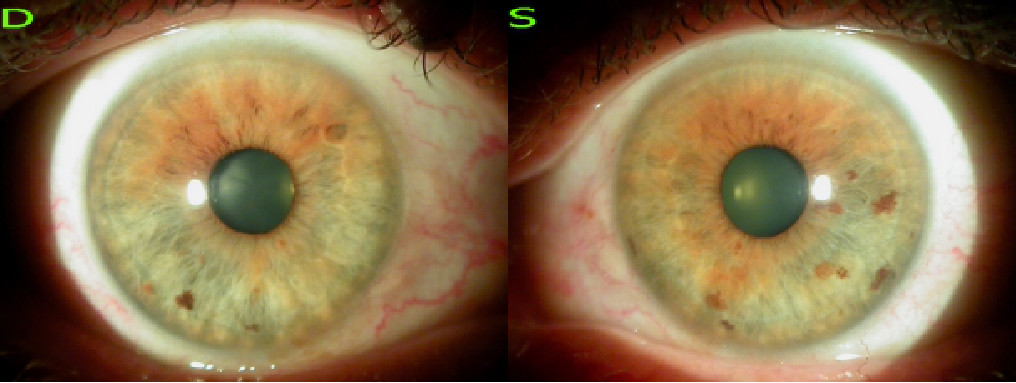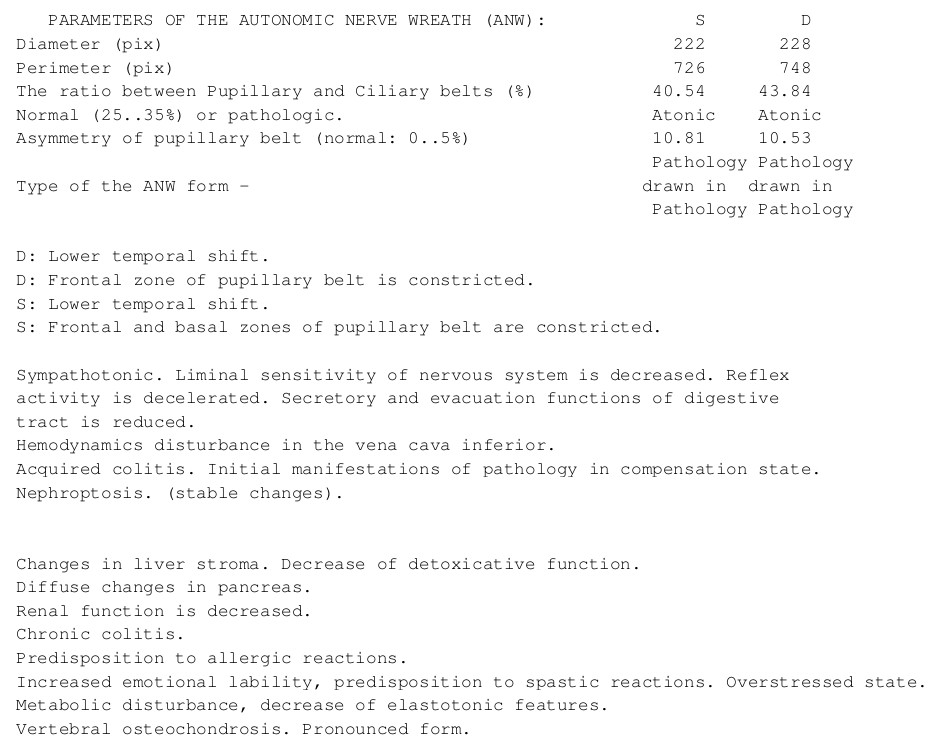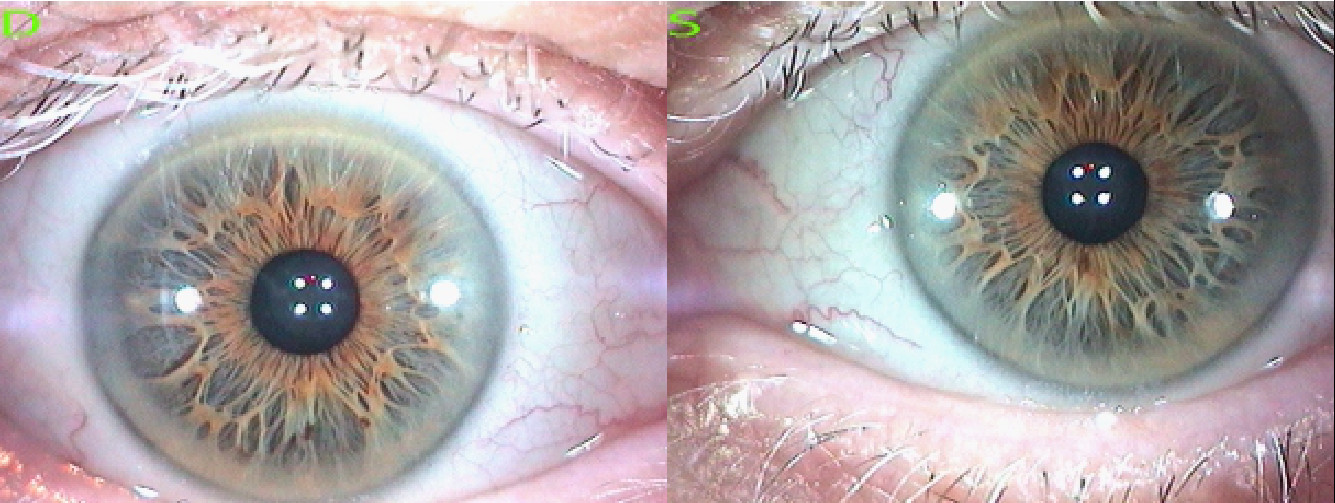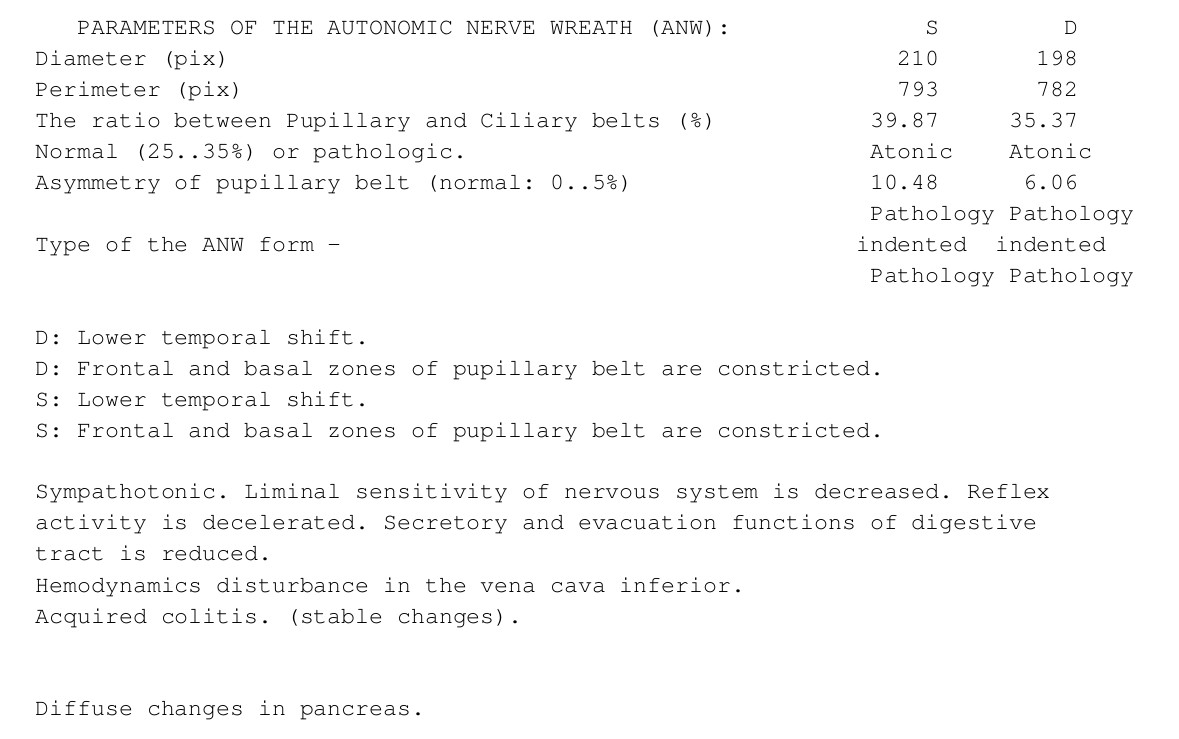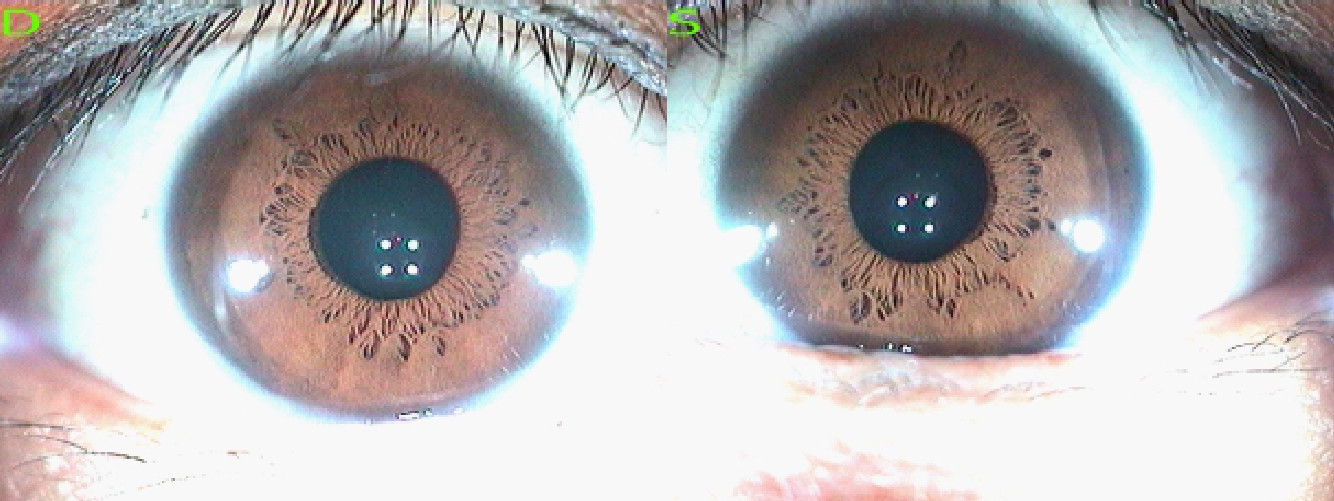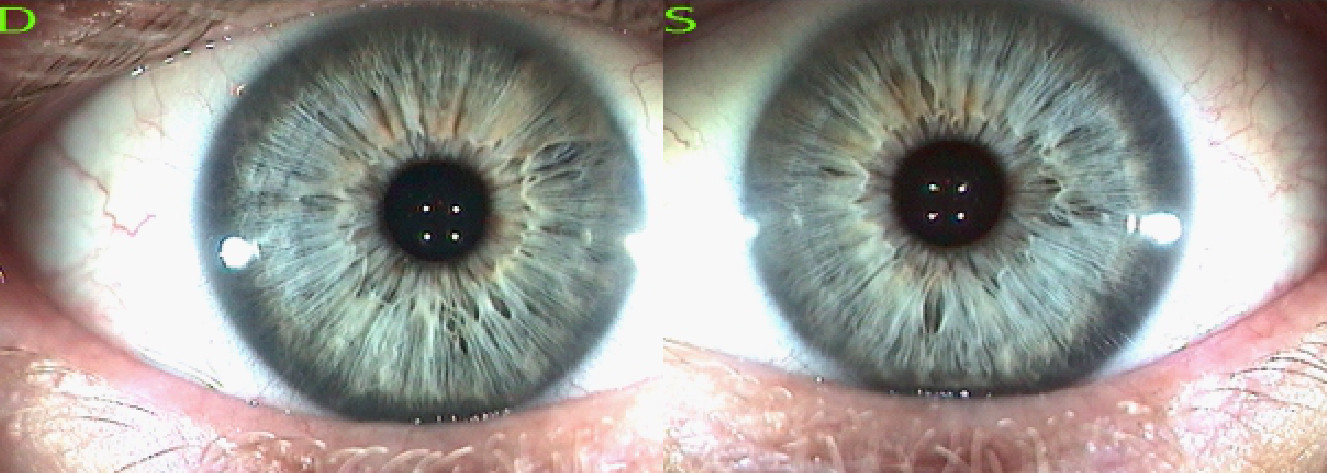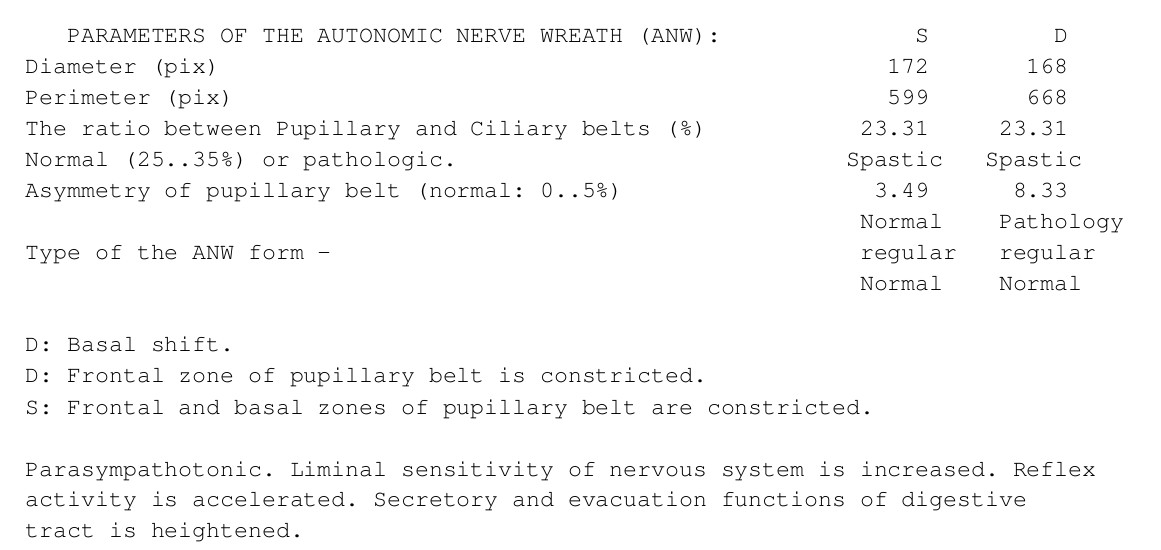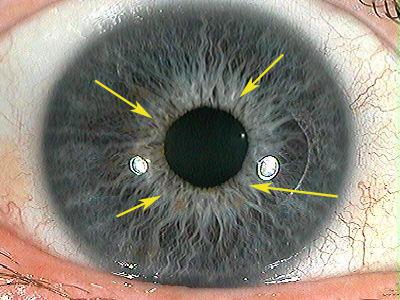
The collarette is derived from embryonic membranes and continues to develop until around the age of three. The area between the external border of the collarette and the pupillary border is particularly significant, as it contains crucial details about the individual’s overall health.
Both research and clinical observations have demonstrated that the integrity of the collarette is linked to:
- The functioning of the autonomic nervous system.
- The health of the gastrointestinal tract.
- Endocrine changes and disturbances.
- Arterial blood circulation
The collarette serves as a vascular analog for the autonomic nervous system, representing the circular phenomenon of nutrient and toxin exchange between the intestinal tract and the body’s humors. The collarette also reflects the condition of the intestinal lining and the autonomic nervous system.
The circular conformity of the collarette indicates nervous system equilibrium and suggests a direct link between intestinal disturbances and peripheral disturbances throughout the body. Therefore, it is a vital marker for the gastrointestinal system, the autonomic nervous system, and the overall nervous system.
The distinction, arrangement, and shape of the collarette help identify patterns of intestinal activity and reactive characteristics. The autonomic nerve wreath reveals the system’s response to various lifestyle, dietary, and emotional factors. Notable signs include crypts, stroma density, central heterochromia, as well as radial and contraction furrows.
An obscured collarette often indicates toxicity with possible dysfermentias and dysbacteria (dysbiosis). A thickened collarette may suggest toxic materials leaking through the intestinal walls, leading to chronic inflammation of the surrounding lymphatic tissues.
Changes in collarette distention and constriction may also reflect specific physical behaviors.
The collarette is characterized by the following parameters:
• Dimensions of the pupillary and ciliary belts
• Pronunciation
• Clarity
• Color
• Form type
In newborns, the collarette in the iris is nearly indistinguishable and develops fully by the age of three to five years. Initially, it appears as a continuous or interrupted line, elevated above the deep mesoderm layer, where large trabecular structures form this line. The autonomic nerve wreath (ANW) is a dynamic structure, capable of constricting or expanding depending on the changing size of the pupillary belt and pupil. Therefore, conducting biomicroscopic examinations of the collarette with constricted pupils and bright illumination is beneficial. This zone is crucial for diagnosis because the collarette indicates the activity of all visceral systems and serves as a reference point for targeted diagnostics. The height and width of the collarette can be used to assess the functional state of the sympathetic part of the autonomic nervous system.
A regular, nearly circular collarette results from a balanced interaction between the sphincter and dilator muscles. The pupil sphincter has approximately 70-80 separate segments, while the widely distributed dilator has a similar number of segments.
Normal collarette function depends on the harmonious interaction of these muscle segments, supported by both parasympathetic and sympathetic nervous system components. Proper coordination among these components is crucial for the normal functioning of internal organs. Prolonged and pronounced dysfunction in organs, along with pathological viscero-iridal impulses, can lead to autonomic nervous system disharmony and subsequent pigment metabolism disruptions and structural deformations in the collarette.
Under normal conditions, the collarette’s color matches that of the iris. Any increase or decrease in color intensity, whether local or general, should be considered pathological.
The collarette is often associated with various important organs, so pathological signs in this formation are linked to corresponding organ pathologies. The most severe sign is a rupture, which may indicate irreversible pathology in the autonomic nervous system components or hypofunction in the associated organs. For instance, a rupture in the upper part of the collarette might indicate neurological symptoms in the cervical region of the spinal column.
Certain changes in the collarette are indicative of specific diseases. Russian medical studies have shown that some changes are associated with mental illnesses. In particular, structural disorganization of the iris stroma in the brain projection, along with local protrusions of the collarette in this area, is a typical sign for schizophrenia. Some patients exhibit a double protrusion without ruptures, known as the “horns” symptom, while others show protrusions that disrupt the collarette’s integrity.
Local drawing out of the collarette suggests pathology in the organ corresponding to the drawing’s projection. For example, local drawing out in the lateral sections of both irises is observed in patients with cardiac conditions such as post-infarction cardiosclerosis, rheumatic failures, or left ventricular hypertrophy. Research in Russia has linked the location and extent of collarette protrusions with hypertension in certain heart chambers. Protrusion in the left iris’s heart projection is three times more common than in the right. The extent of collarette deformation correlates with the severity of myocardial hypertrophy: slight deformation indicates compensated hypertrophy, moderate deformation reflects early stages of dilation, and pronounced deformation suggests significant dilation. A rupture in this area, though rare, may indicate aneurysm formation.
Ptosis of abdominal organs leads to specific changes in the collarette. Minor ptosis of the transverse colon, which may have no clinical symptoms, is reflected by flattening of the collarette in the upper sections. Significant ptosis of the transverse colon, along with prolapse of other abdominal organs, is associated with pronounced flattening of the collarette, both in the upper and lower parts. It is important to differentiate this lower flattening from that observed in the “5:00 – 7:00” sector, which is related to duodenal ulcer disease or a hereditary predisposition to gastroduodenitis. In bronchial asthma, collarette changes occur in the lung-bronchi area, while atherosclerosis of the lower extremities affects the brain and pelvic organ regions. Strictures of the transverse colon may correspond to localized pronounced drawing in of the collarette, while diverticula of the large intestine are associated with small local drawings. These signs can be more prevalent in cases of diverticulosis.
Recent research highlights that, in addition to changes in the form, structure, and color of the collarette, its response to various irritants and associated reactions are also crucial factors.
It is known that the collarette tends to mirror the movements of pupil dilation and contraction. In individuals with a stable nervous system, these reactions are typically synchronous and symmetric in both eyes. However, increased or decreased excitability of the central nervous system can disrupt this consensual reaction. While symmetry might be maintained in some organic brain pathologies, other psycho-emotional conditions may disrupt both synchrony and consensuality.
Studying these reactions, which are closely linked to higher nerve activity and reflex responses, provides valuable insights into individual processes of excitation and inhibition. It also helps in evaluating reactivity and resources at the subcortical level.

